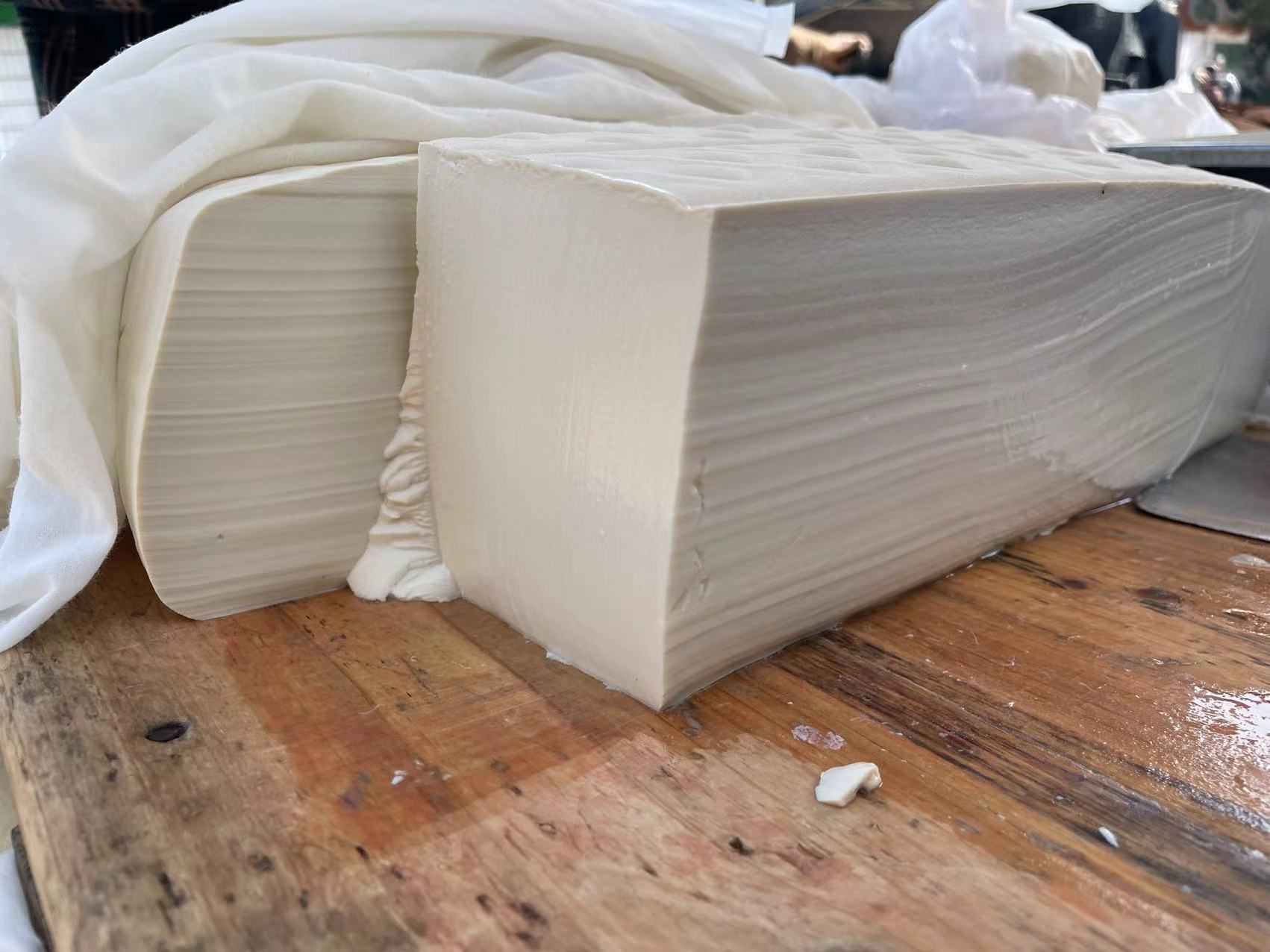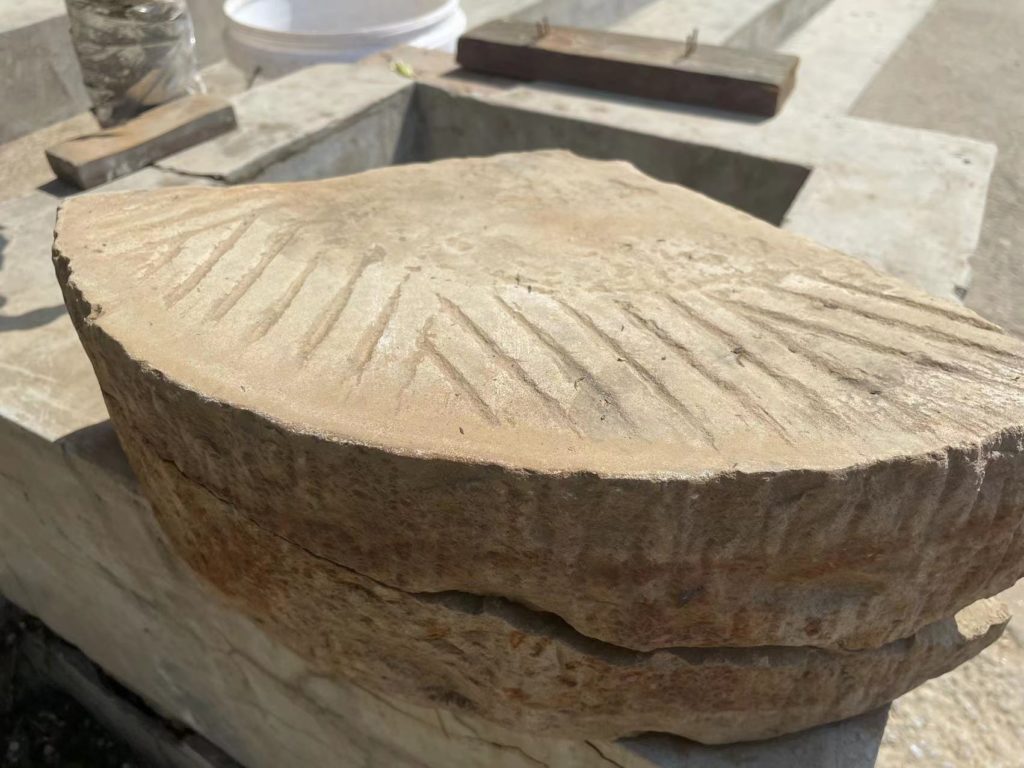Essay
A heart of tofu
By Small Zhang
May 2022

When I was a kid, I never understood why tofu was always on the table at home. Tofu may be good for all ages, but it’s not a unique delicacy, let alone a home-cooked recipe. After eating too much fried tofu and stewed tofu, I began to hate tofu.
But in retrospect, tofu may be the indelible totem, the heart, of our family. So maybe tofu and my origins were foreshadowed long, long before I began to wake up.
My memory takes me back to a summer evening when I was 7 — I remember the number well, for I had just entered school and begun my quest for knowledge as a pupil. But it was also when I remember my grandfather telling me something profound about the past. He told me my family was supposed to live on farmland and livestock like everyone else in the village. To put it simply, we depend on the weather to eat. But Grandpa wasn’t satisfied. He wanted change. In poverty, grandpa’s thoughts finally fell on soybeans. The whole body of this legume plant can be used to create value. The stems can be used for fire; the green, unripe pods can be cooked for food; and the ripe yellow beans can be dried and preserved. What’s more, soybeans can be ground into bean milk, which can be curdled into tofu, which can be made into dried and preserved tofu. Even the leached residue can be turned into protein for pig feed.
The soybean’s selfless character opened grandpa’s eyes to endless possibilities.
Creating reality out of nothingness is how Grandpa summed up his soybean processing business at the beginning. In the years of poverty without machinery, the stone millstones whirled round and round, to the monotonous sound of friction, and the white bean juice flowed continuously, nourishing my father’s three brothers and sisters.

Tofu is a tame food without a strong smell. If you add spicy bean paste, it becomes mapo tofu in Sichuan cuisine, spicy and fragrant. If marinated broth and vegetables are added, it turns into stewed tofu in an iron pot in northeastern cuisine. It seems that tofu, like a piece of white paper, can change with the changes of the outside world at any time. But in fact, no matter what kind of dish it is, the inside of tofu is pure white, and its warm and peaceful heart has never changed.
But I still don’t like tofu.
When I was boarding at high school, I had to eat my meals in the school cafeteria. One of my favorite dishes was braised mutton with cabbage. The sweetness of the cabbage balanced the richness of the mutton and the cumin broth. But after I left school, I couldn’t replicate the joy of buying this seemingly simple dish in the cafeteria. Maybe the charm of the dish lies in the school canteen and the enclosed living environment where there is nothing to choose from. Maybe my grandparents like tofu for similar reasons, I think.
I am a person who loves to eat and try to cook, and my family often comments that I am like my father, who is a chef. But this is not something worth boasting about, because the occupation of chef in China, for thousands of years of history and culture, has always been a low profession. Even though China has a variety of cuisines and cooking techniques, technical schools specializing in cooking are the only choice for many who fail the National College Entrance Examination. But, despite this stigma, I still took the initiative to try cooking vegetables and soup at home.
I had a thick scrapbook full of recipes and restaurant descriptions cut out of Grandpa’s newspaper. Even though many excellent chefs are buried in the dust of life, I try to feel their passion and creativity in these original, local and imaginative dishes. One of my most memorable dishes is removing all the meat from the steamed crab, then hollowing out an orange, and finally cooking the juice and meat and pouring it into the orange peel, which has only a small opening. Such a wild imagination shocked me at the time. Such a strange but psychedelic combination, but it makes me yearn for its taste.
I have also tried to translate dishes from kungfu novels and ancient texts into reality, but there are more failures than successes. One of the most successful dishes involves tofu: the ham is hollowed out and filled with crushed tofu, then wrapped in batter and fried. I did not expect it to be so delicious.
Maybe, I do like tofu.
Perhaps, without human participation, beans would never become tofu and ham would never meet tofu. The combination and collision of food are unimaginable encounters one after another.
With the internet, I like food even more. Through my phone, I’ve watched Romanians go crazy for garlic; Nepalese climb hundreds of meters of cliffs for precious honey; and Northern Europeans turn sharks into fermented jerky. Countless food lovers share their creations and inspirations in their own videos, articles and columns. Some video makers even create their own brands, realizing their wealth and dreams by relying on food. Li Ziqi, for example, presents viewers with a wonderful world away from mundane distractions, where they can be in close contact with nature, and she uses a series of retro methods to handmake food that has long been replaced by factory lines. Her success also expresses that although today’s society is highly urbanized, people want to find peace and satisfaction in the fast pace of life, and this peace is the nature that has long disappeared between steel and cement.
Even if man can land on the moon and dive to the bottom of the sea, food is the most sincere reminder that man cannot leave land and nature.

Tofu may be the indelible totem, the heart, of our family.

Burned out Chinese teachers struggle with school responsibilities
It’s after 10pm and the city streetlights have long been on in southeastern China. Melisa returns home, exhaustion written on her face. All she wants is a shower
The unseen creators: how AI powers the mini-games becoming online hits in China
In three quick strokes, a blue-haired swordsman unleashes curved, shining blue blades for an attack that appears effortless as it takes down three masked opponents. Moments later, the swordsman stands still with a steely gaze and a calm face.
Loneliness drives new ‘accompanying economy’
Solo travelers hire “photo companions” for travel pics and conversation









